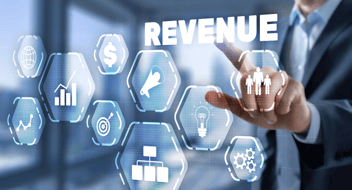How to create better website funnels to maximise conversions?

It doesn’t matter whether you run an eCommerce, SaaS, or B2B website, there should be no compromise when it comes to your website conversion funnel.
After all, it’s what’s going to turn website visitors into paying customers.
If you’re unfamiliar with what a conversion funnel is, it’s a set of web pages that are set up in a way that will prompt website visitors to take the desired action, ultimately leading to a sale.
Even if you’re unfamiliar with it, chances are that you’re already using a conversion funnel on your website—intentionally or unintentionally. Think of a ‘Sign up’ button on your Home Page that redirects them to a subscription page or a
‘Buy now’ button on your products page that leads to the checkout page.
But, the beauty of website funnels is that you can always optimise them and even create new ones to get multiple times more conversion and profit.
So, here’s how to do that.
Where to start?
Firstly, it’s important to understand what stage of the customer journey your website visitors are in, which simply means how advanced along the way they’re to taking the desired action on your website.
There are four main stages to a customer journey: awareness, interest, desire, and action. You can improve your conversion funnel by creating optimised pages for each stage of the customer journey.
Your website conversion funnel needs to provide enough information and motivation to move visitors to the next stage of the customer journey.
It’s also important to understand that regardless of how good your product or service is, not every lead that starts the customer journey will become a customer, hence the name conversion funnel.
Awareness stage
In the awareness stage, your main goal with your conversion funnel should be to attract qualified leads—leads that are likely to progress to the next stage of the customer journey—to your website.
In simple terms, it means you need to make your audience aware of your brand and products or services and get them to visit your website.
There are a number of ways you can achieve this; paid ad campaigns, organic search, and social media.
Paid ad campaigns are perfect if you want to get in front of leads who are actively searching for a product or service that’s similar to what you’re offering. You can push them to an ad landing page that provides information about your products or services. But the downside is that—it’s expensive.
If you’re looking for cheaper but effective ways to put your name out there, organic search and social media are the way to go. You can ramp up your SEO efforts to get qualified leads to your website and you can achieve the same with the right targeting with social media posts.
Interest stage
Once you get leads to visit your website, it’s time to nurture them and create interest in your products or services. Your best bet here is to provide quality, informative, and relevant content.
Find out what pain points your leads have and publish content that positions your brand as a figure of trust and authority on that subject.
You can push website visitors to blog posts and guides, but our favourite way of doing this is to offer them downloadable content that requires their email addresses.
Desire stage
Now that you’ve created interest among your website visitors and got them to sign up for your email list, your next goal should be to make them desire your offering, which you can do by making them realise why they need your product or service.
The name of the game here is to target specific pain points, don’t cast a wide net.
Pick one pain point you identified during the previous stage and deliver content that pushes them to pages on your website which show how your offering can address that specific pain point.
This will create a strong desire in your leads to try your products or services, which will progress them to the next stage in the funnel.
Action stage
It’s the stage where you see the results of all the work you’ve done thus far. This is where your leads will—potentially—become customers.
Usually, this will be the checkout page if you’re selling a product or the subscription page if you’re selling a service. But, the type of page in this stage of the funnel can differ based on what you’re offering.
If you’ve followed the steps so far, you can be assured to see a pretty sizable increase in the number of conversions!
Well…you’re all ready and prepped to go
Now you know how to create a website conversion funnel, it’s time to put your knowledge into action.
Keep in mind that you can always optimise your funnel to make it better, look at where leads are dropping off and take measures to reinforce that stage of the funnel.
Good luck 😉


